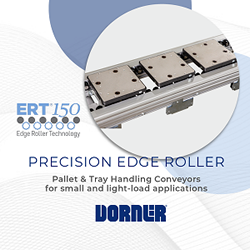Vertical Farming Market Size to Reach USD 11,905 Million By 2026
According to a new study published by Polaris Market Research the worldwide Vertical Farming market is anticipated to reach over USD 11,905 million by 2026. In 2017, the shipping container dominated the global market, in terms of revenue. Asia-Pacific is expected to be the leading contributor to the global market revenue during the forecast period.
The growing population worldwide has resulted in significant increase in food demand. Vertical farming is increasingly being used to meet the high-demand for food crops. The factors driving the growth of vertical farming market include ability to produce high quality crops throughout the year, lesser use of water for crop cultivation, and lower dependency on weather conditions. Organic and chemical free crops can be grown with the help of vertical farming in artificially controlled environments, which further increases its adoption. Other factors driving the market include growing urban population, and reduced environmental pollution. However, high initial investment and crop production of limited varieties restrict the growth of vertical farming market.
Asia-Pacific generated the highest revenue of $835 million in 2017, and is expected to lead the global market throughout the forecast period. This is owing to significant growth of population in the region. Lack of fertile land, Strong technical expertise in agricultural practices, and established R&D institutes in China and Japan further supplement the market growth.
View For More Information @ https://www.polarismarketresearch.com/industry-analysis/vertical-farming-market
The growing mechanisms used for vertical farming include hydroponics, aquaponics, and aeroponics. In 2017, hydroponics accounted for the largest share in the global market, and was estimated at USD 1,086 million in 2017, registering a CAGR of 23.3% during the forecast period. Hydroponics is a process of growing plants where the traditional soil medium is replaced by nutrient and mineral rich water solution. Hydroponics offer benefits such as availability of crops throughout the year, faster plant growth, and eliminate the growth of pesticides.

On the basis of offerings, the market is segmented into lighting solutions, sensors, climate control, and hydroponic components. In 2017, the lighting solutions accounted for the major share in the global market. Lighting solutions are used to provide uniform lighting conditions suitable for plant growth. The leading market players offering lighting solutions for vertical farming include Koninklijke Philips N.V., Illumitex, Inc., and Everlight Electronics Co. Ltd.
The well-known companies profiled in the report include BrightFarms, Agrilution, Everlight Electronics Co., Ltd., American Hydroponics, Freight Farms, Illumitex, Inc., and Vertical Farm Systems among others. These companies launch new products and collaborate with other market leaders to innovate and launch new products to meet the increasing needs and requirements of consumers.
Comments (0)
This post does not have any comments. Be the first to leave a comment below.
Featured Product


